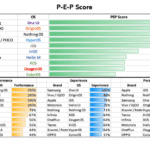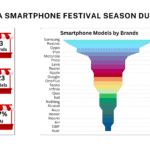Can Marketplaces Compete against D2C Brands by offering Competitive Pricing?
‘Up to 50% off on your favorite beauty products, ‘Buy one get one free on every purchase’, read an advertisement on Instagram by Faces Canada, a beauty brand. The offer sounded irresistible enough for a cosmetic enthusiast like me to head on to their website and grab the products. As much as I was clear on adding only the necessary items to my cart, I ended up adding a lot more products, given the amazing offer the brand had to offer.
I started to wonder, why not make this purchase on Nykaa, where I could not only utilize my remaining points but also avail more offers in terms of coupons and cashback. . Excited enough, I began scanning the products on the marketplace only to realize that the products listed on Nykaa (from the brand in conversation) are comparatively more expensive than on the website. Irrespective, I moved on to the final purchase page wondering if a coupon application might just reduce the cost.
Voila!
There was a stark difference in the overall price. The website (of Faces Canada) also offered additional discounts using CRED coins and cashback which made the platform my final choice of purchase. Similar offers were shown by luxury brands like Mac, Clinique, and Bobbi Brown, where the website had a lot more to offer in terms of loyalty points, discounts, and cashback than the marketplace. And in case I were to opt for a product exchange or make a complaint, I’d directly get in touch with the brand, thus getting away with the intermediary.
I did buy a couple of other products on Nykaa from different brands which were an immediate necessity. The marketplace ensures minimum delivery time where I ended up receiving the products in 24 hours as opposed to D2C brands delivery which takes up to 8-10 working days.
Personally, I was okay to wait for a few days until the delivery happened from the D2C website given the amazing discounts and that the products were not an immediate necessity.

Lessons for Brands & Marketplaces
As consumers, we want the best products at the least price possible therefore we ensure to look out for multiple offers and discounts on different platforms, ensure product authenticity, factor in delivery time, look at packaging and membership benefits (or loyalty points).
For brands going D2C, they need to look into better page optimization services to ensure a seamless shopping experience for their customers, explore shorter delivery & turnaround time to acquire and retain their shoppers.
In a highly competitive space like the eCommerce industry, it is no longer about bringing multiple brands under one platform but giving the customers the best offers and a personal touch to remain significant. With more and more fintech companies (like CRED), and neo-banking companies (like Slice, Jupiter ) luring customers with lucrative cashback and discounts on multiple brands, the marketplaces should deploy strategies to attract these set of new-age consumers who enjoy a good deal.
If you were I, would you avail the amazing discount at the cost of slow delivery speed from the brand?
Read about BRAND INFRINGEMENT IN E-COMMERCE: A KEY ASPECT FOR BRAND SAFETY





